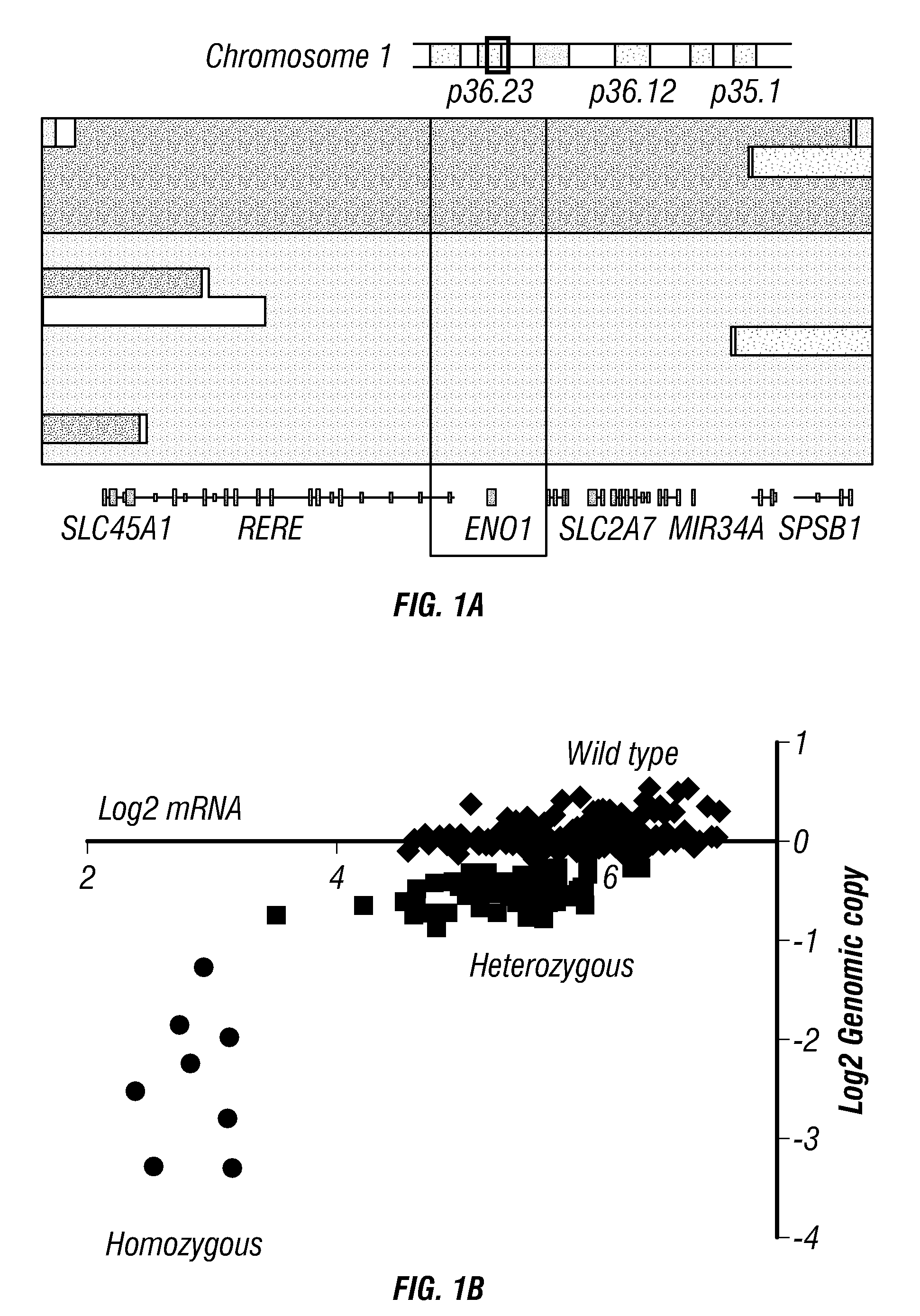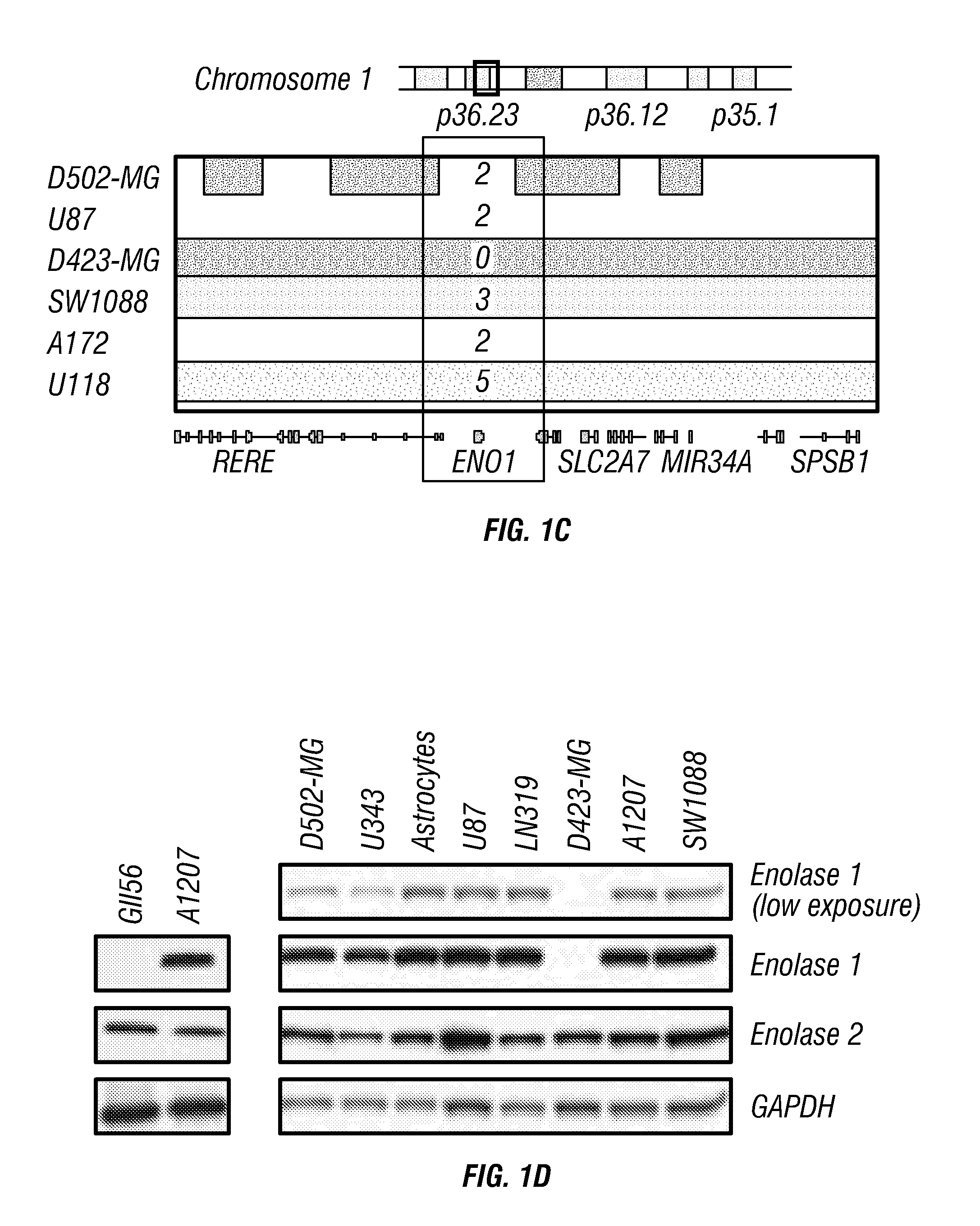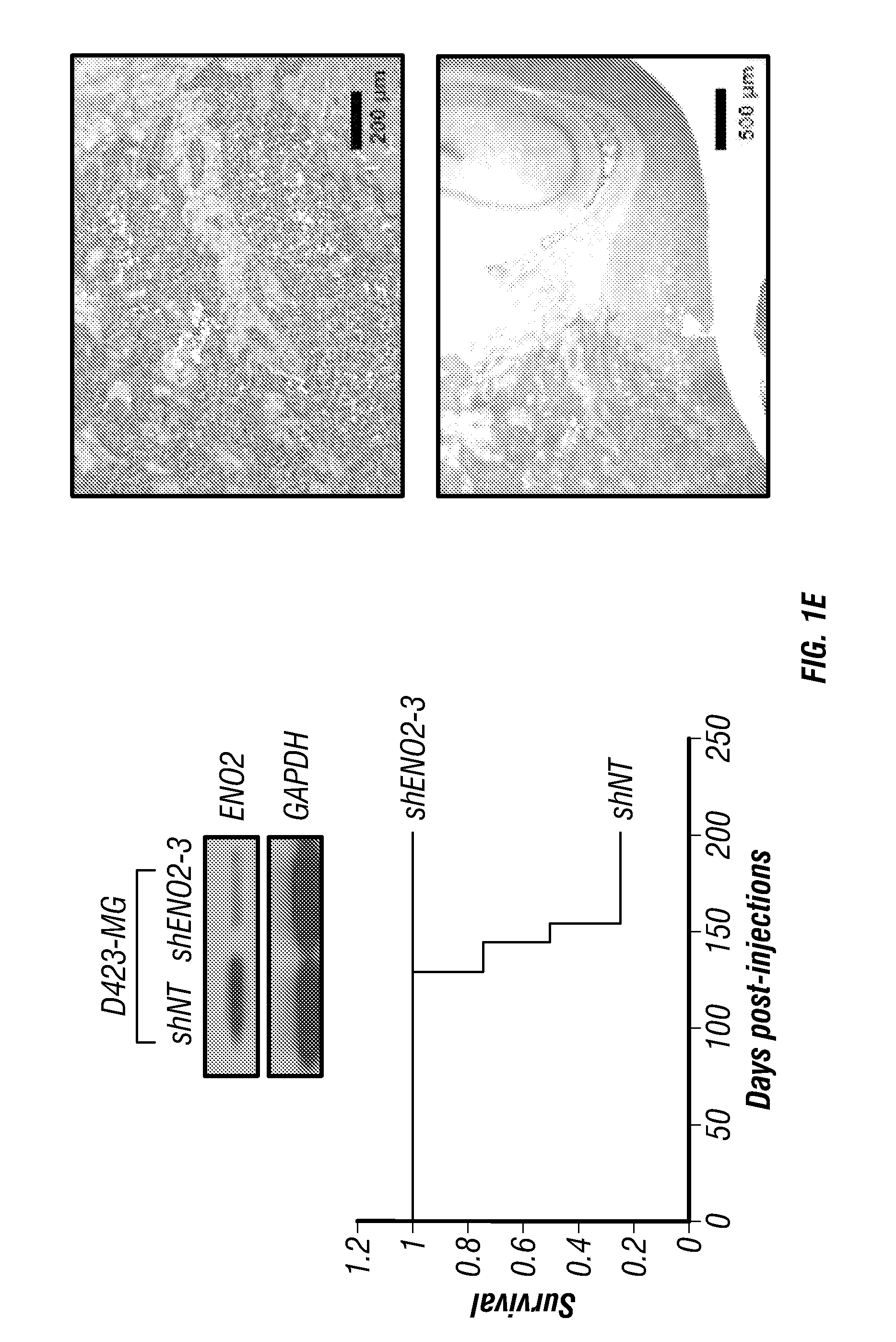Collateral gene inactivation biomarkers and targets for cancer therapy
a gene inactivation and cancer technology, applied in the field of molecular biology and oncology, can solve the problems of affecting the survival rate of cancers containing heterozygous deletions in housekeeping genes, and thereby reducing the risk of cancer, reducing tumor-associated pain, and reducing tumor size or burden
- Summary
- Abstract
- Description
- Claims
- Application Information
AI Technical Summary
Benefits of technology
Problems solved by technology
Method used
Image
Examples
example 1
Targeting Housekeeping Genes in Cancer Cells with Homozygous Deletions Results in Cancer Cell Death
[0204]Cancer cell proliferation and or death is induced where the cancer has a homozygous deletion in a housekeeping gene and the housekeeping gene has a functionally redundant homologue by administering to the subject or contacting a cell with an inhibitor of the redundant homologue in an amount sufficient to inhibit the activity of the redundant homologue.
[0205]General Methods
[0206]Cell Culture
[0207]Cell lines having the homozxygous deletion are cultures using know methods. (1p36 For comparative purposes, cell lines U87, LN319, SW1088, U343, U373 and A1207 are grown under the same conditions.
[0208]shRNA Knockdown of Housekeeping Gene Expression
[0209]Hairpins targeting the houskeping gene are prepared and screened for their ability to reduce protein levels of the housekeeping gene.
[0210]The hairpin in the GIPZ vector was cloned into the TRIPZ vector using a protocol provided by the ma...
example 2
Inhibition of ENO2 activity induces cell death in cell lines with a homozygous deletion of ENO1
[0219]General Methods
[0220]Cell Culture
[0221]Cell lines D423-MG (1p36 homozygous deleted including ENO1) and
[0222]D502-MG (1p36 homozygously deleted, but excluding ENO1) were obtained and cultured in DMEM medium with 20% FBS (Duncan et al., 2010; D423 and D502 are referred to as H423 and H502 in Duncan et al., but as D423-MG and D502-MG in the Sanger database, the nomenclature adopt here). For comparative purposes, cell lines U87, LN319, SW1088, U343, U373 and A1207 were grown under the same conditions. Normal embryonic human astrocytes obtained from ScienCell (Carlsbad, Calif.) were grown in media provided by the manufacturer.
[0223]shRNA Knockdown of ENO2 Expression
[0224]22 hairpins targeting enolase 2 were screened and 4 independent ones found that yielded a reduction in protein levels >50%. Two of these hairpins were in the pLKO.1 vector (ShENO2-1 and shENO2-2) and the remaining two wer...
example 3
Deletion of ENO1 Renders Cells Susceptible to Glycolysis Inhibitors
[0248]Cancer genomes are characterized by numerous copy number amplifications and deletions, which target driver oncogenes and tumor suppressor genes, respectively. Often, these genomic alterations are large regional events, affecting many other genes in addition to the intended target(s). The fact that such broad genomic alterations are not negatively selected against in cancer cells implies that, on their own, the copy number alterations of these neighboring passengers must not carry any detrimental biological consequence. That said, it is conceivable that these passenger genomic events can create unintended (collateral) vulnerabilities unique to those cells; such as when a passenger being co-deleted is a member of a redundant multi-gene family serving an essential housekeeping function. A large body of genetic interaction studies in invertebrates as well as mice indicates that many essential cellular housekeeping ...
PUM
| Property | Measurement | Unit |
|---|---|---|
| time | aaaaa | aaaaa |
| time | aaaaa | aaaaa |
| time | aaaaa | aaaaa |
Abstract
Description
Claims
Application Information
 Login to View More
Login to View More - R&D
- Intellectual Property
- Life Sciences
- Materials
- Tech Scout
- Unparalleled Data Quality
- Higher Quality Content
- 60% Fewer Hallucinations
Browse by: Latest US Patents, China's latest patents, Technical Efficacy Thesaurus, Application Domain, Technology Topic, Popular Technical Reports.
© 2025 PatSnap. All rights reserved.Legal|Privacy policy|Modern Slavery Act Transparency Statement|Sitemap|About US| Contact US: help@patsnap.com



